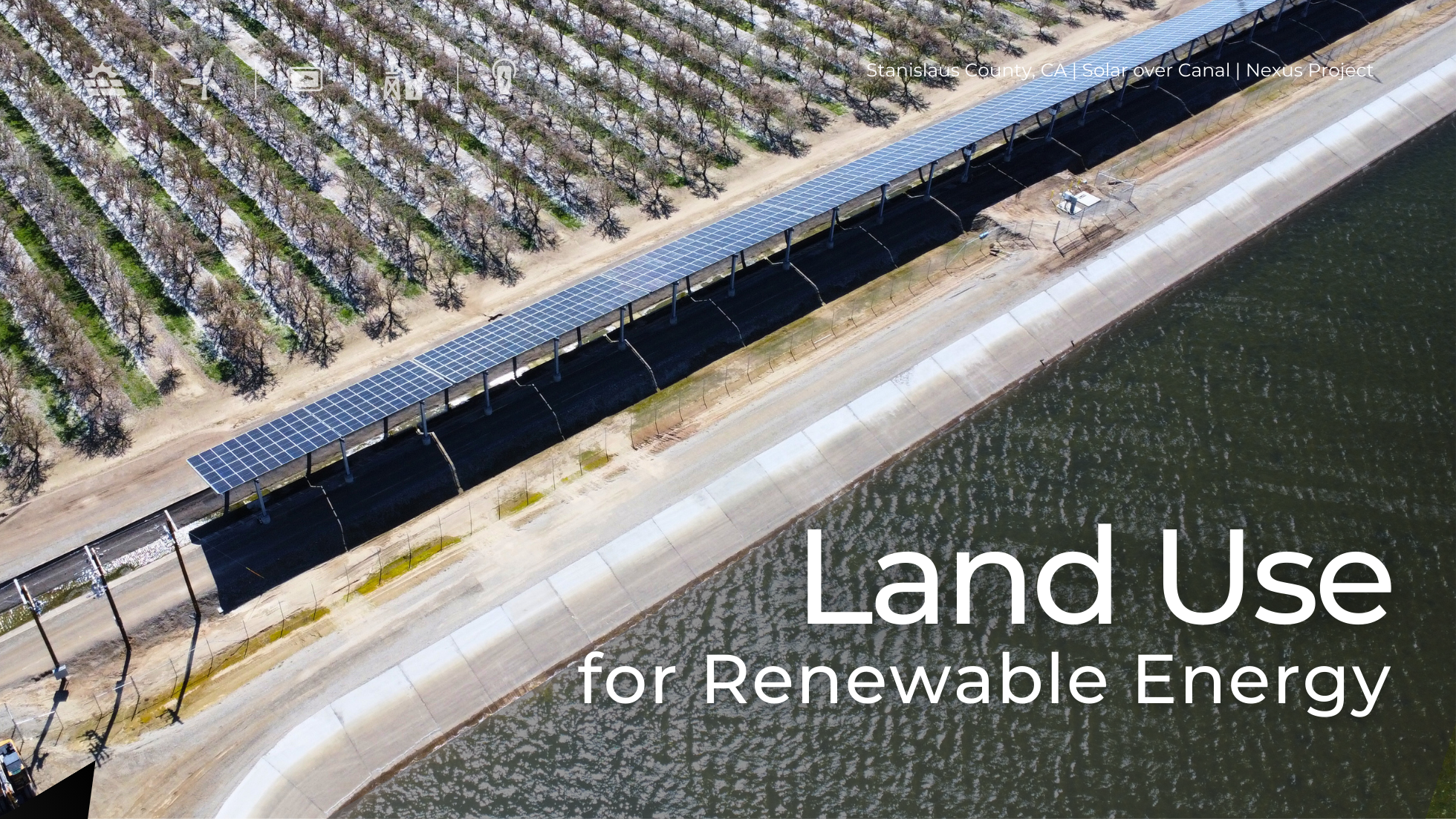Constructing Data Centers that Power Artificial Intelligence (AI) Learn More
Maximizing Land Use for Renewable Energy

Land use has become a key consideration in renewable energy development as the demand for clean energy grows. With increasing competition for space, innovative solutions are emerging that allow renewable energy infrastructure to coexist with existing land uses. By leveraging creative approaches such as agrivoltaics and solar over canals, we can maximize land efficiency while minimizing environmental impact.
Agrivoltaics: Combining Solar with Agriculture
Agrivoltaics is the practice of integrating solar panels with agricultural activities, allowing energy production and farming to occur on the same land. This approach benefits farmers by providing shade for crops, reducing water evaporation, and improving soil health. Additionally, livestock can graze in and around solar installations, naturally managing vegetation while maintaining agricultural productivity. Agrivoltaic projects are proving to be a sustainable way to balance food production and clean energy generation.
Solar Over Canals: A Dual-Purpose Solution
Another innovative solution for land-efficient solar deployment is the installation of solar panels over canals. This approach, seen in projects like California’s Project Nexus, where BEI is working on its second phase, offers multiple benefits. By covering canals with solar panels, these projects generate renewable energy and reduce water evaporation and algae growth, helping conserve water in drought-prone regions. This dual-use strategy supports energy transition while addressing critical water management challenges.
Floating Solar Farms: Harnessing Energy on Water
Floating solar farms, or “floatovoltaics,” are another land-saving innovation. These installations place solar panels on reservoirs, lakes, and other bodies of water, maximizing energy generation without taking up valuable land. Floating solar can also reduce water evaporation and improve solar panels’ efficiency due to water’s cooling effect.
Repurposing Brownfields and Underutilized Land
Instead of using prime agricultural land, renewable energy projects can be developed on brownfields, abandoned industrial sites, or otherwise underutilized land. A great example is the Westlands Solar Park, a large-scale solar power project in Kings County, California. The project aims to build multiple photovoltaic power plants, making it one of the largest solar installations in the world. The site is unusable for agriculture due to excess salt pollution, and BEI is currently contributing to one of the renewable power plants within this massive energy hub. By repurposing these degraded lands, renewable energy projects help revitalize communities and prevent competition with food production.
Supporting Smart Land Use in Renewables
As renewable energy continues to grow, maximizing land efficiency will be key to sustainable development. As technology advances, these innovations will play an even greater role in shaping a more sustainable and resource-efficient energy future. By embracing multi-use strategies, we can ensure that clean energy solutions contribute to both environmental protection and economic resilience.